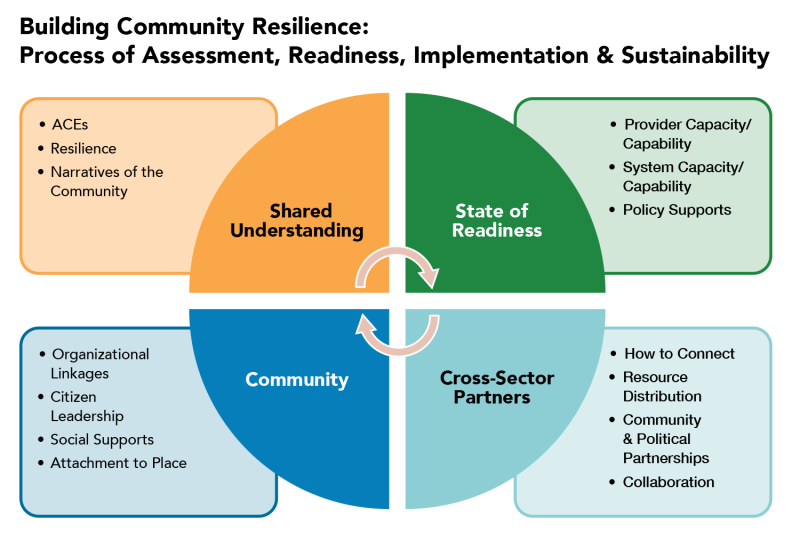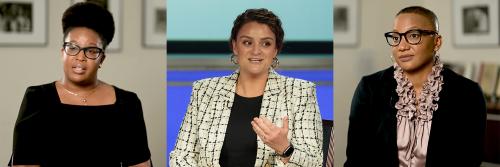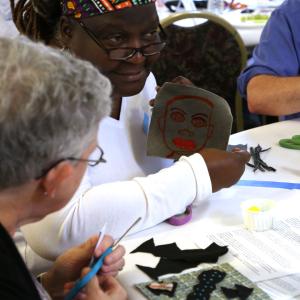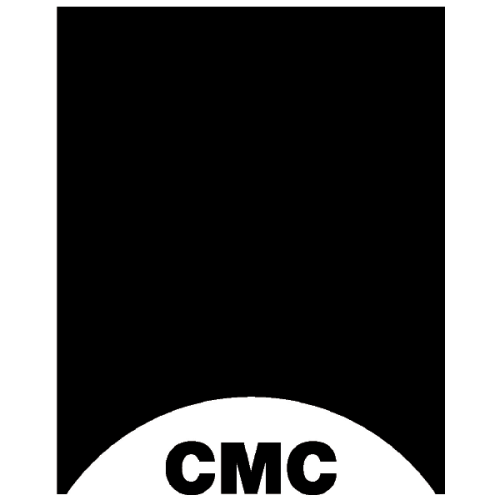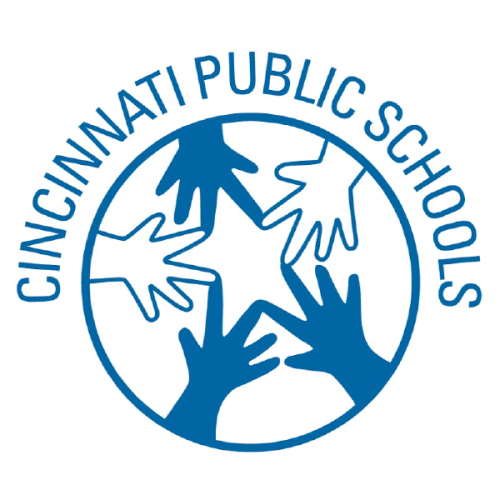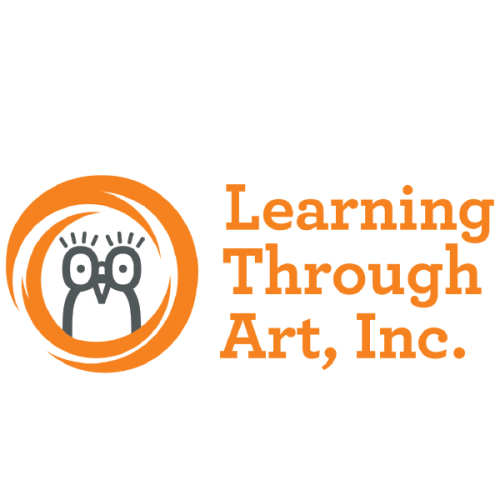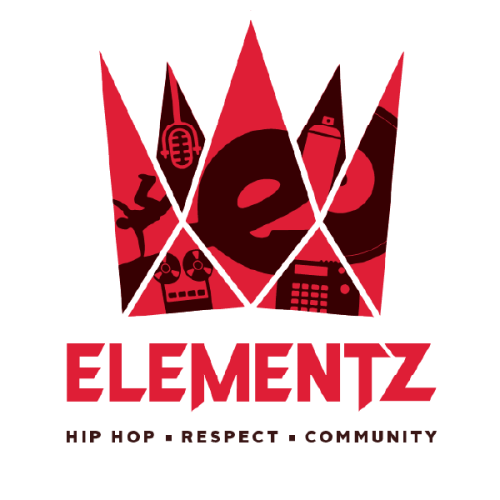Truth & Equity: Cincinnati
Truth & Equity
Cincinnati
Executive Summary
In May 2020, the murder of George Floyd touched off a wave of protests throughout the nation and spurred increased dialogue about structural racism in America and the impact of decades of inequitable policies and practices. One of these conversations took place in Cincinnati, Ohio, as Dr. Wendy Ellis, director of the Center for Community Resilience (CCR)—and a native of Cincinnati—and Carolyn Brinkman, steering committee chair of Cincinnati’s Joining Forces for Children (JFfC), discussed racial equity in Cincinnati and how best to foster racial healing across the city. At the same time, Tia Gaynor, Ph.D., founding director of the University of Cincinnati Center for Truth, Racial Healing, and Transformation (UC TRHT), and Denisha Porter, coalition director of All-In Cincinnati, were also talking about opportunities to use racial healing to advance policy change.
These conversations launched a Truth & Equity initiative aimed at implementing a process of Truth and Reconciliation in Cincinnati and establishing a model for other cities to follow. Organizations throughout the region—including leaders from the healthcare, arts, academia, culture, education, business, and philanthropic sectors—joined the effort. Beyond fostering racial healing, they sought to build political will to advance a community-driven policy and advocacy platform that would dismantle structural racism and promote justice and equity throughout the region.
Already part of CCR’s Building Community Resilience (BCR) Collaborative—a national network of cross-sector partners working to improve the outcomes of children, families, and communities—Cincinnati had a strong coalition in place. Throughout the first year of the effort, the coalition—anchored by JFfC, All-In Cincinnati, and UC TRHT—worked to build individual and organizational capacity to foster racial equity across many city sectors through historical education, advocacy training, and community leadership. Grounding the effort in the voices of community members, organizers led community conversations, hosted racial healing circles, and facilitated leadership development opportunities. In addition, CCR produced a documentary that highlights the stories of neighborhoods and families harmed by structural racism in Cincinnati and provides a pathway towards healing and community resilience.
Undoing centuries of systemic racial inequities will take time, but coalition members are optimistic that the Cincinnati Truth & Equity coalition is making progress toward shifting narratives, initiating healing, and sparking a political process for change. As CCR gets set to replicate portions of this effort in Washington, D.C., this case study explores key elements of the Truth & Equity initiative and shares lessons learned.
The Center for Community Resilience partners across business, community, philanthropic, advocacy, public education, health, and social sectors to support communities in adopting and adapting policies, programs, and practices that address adverse childhood experiences in the context of adverse community environments—the Pair of ACEs. Known for its rigorous academic and social research, diverse network of partners, and explicit focus on equity and prevention, CCR works to influence systems and policy change focused on addressing long-standing economic, social, and health disparities by lifting up community voices, integrating service delivery, and building political will for change. Recognizing the strong connection between inequity and systemic trauma, CCR focuses on helping communities access the resources, tools, and policy direction needed to increase equity. Housed within the Milken Institute School of Public Health at The George Washington University in Washington, D.C., CCR is widely known as a trusted thought partner and public health innovator among major foundations, national public health organizations, and federal health leaders.
A Look at Cincinnati’s Past to Understand the Present
Throughout the country, inequality in health, wealth, and wellbeing in communities of color is directly linked to discriminatory policies enacted more than a century ago. Cincinnati, Ohio, offers a variety of examples of how policies put in place in the 1800s—including some of the nation’s first Black Codes and largest urban renewal project—continue to shape economic and health outcomes for Black residents today.
The geographic location of Cincinnati—in the northern-most state of the South, and the southern-most state of the Midwest—has always had an outsized influence over its culture, politics, and race relations. When Ohio was admitted as a state in 1803, the city was an outpost that served as both a portal to the West and an important gateway between the North and South.
In the early 1800s, the Village of Glendale, which sits just north of Cincinnati proper, served as an important haven for abolitionists and a rest stop for freedom seekers escaping to the North. Planned by abolitionists for the purpose of expediting the passage to freedom for the enslaved, the town’s train station could be accessed day and night through an intricate system of underground tunnels. In Glendale, the Underground Railroad was truly underground. Glendale is an example of the many hidden histories of the Cincinnati region that highlight the truth of systemic racism as well as the courageous efforts to seek racial justice.
Although slavery was never practiced in Ohio, one of the state’s first legislative acts—the Black Codes—established a two-tier system of justice that created a different set of standards and rules for people of African descent. Connected to Jim Crow laws of the South, Ohio’s Black Codes were designed to limit the freedom of Black people and keep them as a cheap labor force once slavery was abolished. These laws continue to have long-standing, measurable impact today.
A century later, Cincinnati is a blue island in a politically red state. In late spring and early summer of 2020, many of the city’s residents took to the streets to protest the murders of Ahmaud Arbery, Breonna Taylor, and George Floyd. The level to which the marches and dialogue were sustained was uncharacteristic for Cincinnati. Despite a historic social and economic racial divide drawn across highly segregated neighborhoods, the city has long shied away from open discourse on racial inequity.
“Cincinnati is a highly segregated city—our schools are segregated, and our neighborhoods are segregated. This makes it challenging to bring folks together. There are people who want to come to the table and want to be a part of the healing, but they don’t know how to engage,” explains Erin Saul of JFfC. “After everything that happened in 2020, people realized they needed to step outside their comfort zones and come together with people who were different from them.”
That same year, Cincinnati’s leadership was in upheaval as a corruption scandal led to the ousting of three city council members. The election ushered in a new slate of nine city council members and a mayor who all ran on platform issues related to race, equity, and social justice. This confluence of events—citizen demand for change and new political will—made this an opportune time for partners in Cincinnati to pilot CCR’s Truth & Equity initiative.
A Firm Foundation
Since becoming part of CCR’s Building Community Resilience (BCR) network in 2015, Cincinnati has used the BCR process to guide efforts to improve child health and wellness outcomes across the tristate region through cross-sector and community collaboration. The longstanding relationship between CCR and the Cincinnati BCR collaborative played a major role in building a cohesive coalition to support the Truth & Equity initiative.
The BCR process offers an iterative and nonlinear approach to dismantling inequity through continuous quality improvement in four areas: creating shared understanding, assessing system readiness, establishing cross-sector partnerships, and centering community experience.
The BCR process offers an iterative and nonlinear approach to dismantling inequity through continuous quality improvement in four areas: creating shared understanding, assessing system readiness, establishing cross-sector partnerships, and centering community experience.
Using the BCR process, organizers in Cincinnati worked to create a shared understanding about the impacts of trauma, increase trauma awareness across sectors, and strengthen the understanding that trauma (including racial trauma) goes beyond mental health to impact physical, social, and economic wellbeing. In 2018, when the national BCR Collaborative began discussing equity as the mediating connector between trauma and resilience, Cincinnati BCR moved to make racial equity its primary focus. Two years later, as a racial reckoning spread across the country, the Cincinnati BCR network was ready to act. Existing relationships across Cincinnati and with CCR made it easier to mobilize local partners, leverage existing connections built on trust, and invite and cultivate buy-in among new partners across multiple sectors in support of the Truth & Equity initiative. The integration of coalition partners with strong community ties and trust—including museums, public schools, and grassroots arts and culture organizations—widened the network and expanded opportunities for meaningful community engagement.
Truth & Equity Initiative
In October 2020, in partnership with the Association of Children’s Museums, CCR convened a cross-sector coalition of eight community partners—led by Joining Forces for Children (JFfC), All-In Cincinnati, and the University of Cincinnati’s Center for Truth, Racial Healing, and Transformation (UC TRHT)—to foster racial equity in Cincinnati. The effort sought to deepen understanding of the measurable impacts of structural racism; facilitate racial healing and cross-sector collaboration to advance practice, program, and policy change; and build political will to promote racial justice and equity throughout the region. The Aspen Ascend Accelerator Fund and Milken Institute School of Public Health at The George Washington University provided financial support for the effort.
To carry out the work, the coalition established three steering committees: Advocacy and Education, which focused on how to articulate and advocate for equity-oriented policy and practice changes; Arts and Storytelling which worked to translate the community engagement process into stories; and Community Leadership Development, which aimed to build leadership capacity of community members to plan and implement transformational changes.
Over the course of 18 months, the coalition translated elements of the Truth, Racial Healing, and Transformation® (TRHT) Framework into the BCR process. During the first six months, CCR provided technical assistance to help the coalition create a shared understanding of historical racism in Cincinnati; recognize how dominant narratives are used to obscure or justify racial inequity and maintain the status quo of structural racism; and reinforce the importance of community engagement approaches that are asset-based and uplift lived experiences. With this knowledge, the coalition spent 12 months on a truth-telling campaign to raise awareness of the systemic roots of racial inequity produced by the implementation of policies that are the source of racial inequity. The coalition hosted public forums for community dialogue to foster racial healing. Through this process, community members were invited to examine specific policies that drive racial disparities and identify reform and funding priorities to disrupt vicious cycles of inequity. Helping residents understand history and the mechanisms of structural racism provided a platform for leadership development that lifted up community members as advocates for racial equity.
Operationalizing the TRHT Framework
At CCR, we use the BCR process to operationalize efforts to foster equity and create resilient communities. The elements of the Truth, Racial Healing, and Transformation® (TRHT) Framework – narrative change, racial healing and relationship-building, and separation, law and economy – align well with the four components of the BCR process.
Creating Shared Understanding through Narrative Change. Successful coalitions need to create a clear and common understanding of the issues they seek to address. With a focus on identifying root causes of racial inequity, CCR’s Truth & Equity approach facilitates a process that allows partners to develop consensus on the truth of race-based trauma and focus on systems-level drivers that perpetuate racial and place-based inequity. The intentional focus on truth and equity puts the community in control of their narrative, changing minds and creating a collaborative platform to develop solutions aimed at systems transformation.
Cross-Sector Partnerships for Racial Healing. Racial trauma is intersectional, compounding, and occurs across systems. Housing values and business development influence local public school funding; where housing values are depressed, schools are likely under-resourced and the communities over-policed. This pattern of interconnectivity that produces vicious cycles can be found in most communities of color and lower income and across the country. This means that every system has a role to play in fostering racial and economic equity. CCR prioritizes partnering across sectors to facilitate shared accountability and leadership to expand the scope of data and stories, resources (e.g., funding and personnel), and the amount of social capital needed to influence systemic change. By creating an ever-growing network of community linkages, partners widen the possibility to engage diverse stakeholders for dialogue and racial healing.
Assessing System Readiness to Address Separation, Law, and Economy. The process of dismantling structural racism and creating a system that applies principles of racial equity will take time. CCR helps coalition partners assess the state of readiness to confront systems and policies that drive inequity. Many times, this process begins with examination of their organizations internally, external community stakeholders, and the community more broadly, to inform how to prioritize the coalition’s time, attention, and resources. By analyzing the political landscape and social and cultural dynamics, the coalition gains insight into opportunities for traction as well as potential barriers. Our iterative process allows cross-racial and cross-sector coalitions to develop communications and messaging platforms, manage collective resources and develop mutually agreed upon work plans in pursuit of racial equity.
Key Activities
In addition to hosting listening sessions with youth and parents, coalition partners led the following activities:
Creating Shared Understanding: Fostering Social Cohesion through Art and Conversation
From July to September 2021, coalition partners collaborated to deepen the community’s understanding of structural racism through art, culture, and history. More than 4,300 people visited the National Underground Railroad Freedom Center to view We Are the Story: A Visual Response to Racism. Organized by the Freedom Center in partnership with Learning Through Art, the textile exhibit featured quilts with social justice messages inspired by the experience of structural racism in America. To complement the exhibit and provide a forum to advance the discussion on structural racism, the coalition launched a series of facilitated “Story Quilts” community conversations. At in-person and virtual events hosted by local organizations across the region, participants created quilt squares that allowed individuals an opportunity to share their truth about systemic racism and offer solutions for healing. Following each conversation, organizers stitched the individual quilt squares together and displayed the finished quilts—each representing a tapestry of local stories from across the city.
“The Story Quilts project was integral to bringing different parts of the coalition together,” explains Erin Saul of JFfC, noting that the Story Quilts team came to a meeting of early childhood advocates and service providers and worked with 20 JFfC coalition members. “It got the coalition members to connect on a different level. They were each talking about [Diversity, Equity, and Inclusion] efforts on their own, but this is the first time they talked about how to approach it as a group.”
Capacity-Building: Training to Facilitate Racial Healing Circles
In Summer 2021, UC TRHT and JFfC collaborated with the TRHT Center at Rutgers University-Newark. Using Dr. Gail C. Christopher’s Rx Racial Healing approach, the groups trained 85 community members to facilitate Racial Healing Circles (RHCs). RHCs promote empathetic engagement, providing space for participants to lean into the commonalities of their shared humanity while acknowledging the consequences of exposure to racism and honoring diverse cultures and experiences.
“The whole idea is to orchestrate the experience of common humanity. The hope is that people walk away with an understanding of someone who comes from a different background or culture and a better idea of the commonalities that exist,” explains Tom Lottman
of JFfC.
Leadership Development: Cultivating Local Equity Champions
In Fall 2021, UC TRHT and JFfC, with the support of the Cincinnati Museum Center, launched the Cincinnati Equity Champions Leadership Development Program to equip emerging community leaders and advocates with knowledge, skills, and relationships to support their work to foster racial equity. The inaugural cohort includes nine participants who are diverse in race, age, and gender. Guided by CCR, the coalition developed a curriculum for the cohort and hosted a series of learning sessions that prepared participants to catalyze cultural and institutional transformation; promote anti-racist practices; and advocate for justice, diversity, equity, and inclusiveness in their professional and personal lives. Each Equity Champion received a stipend for participating. They will use their training to develop and implement a local advocacy project.
Storytelling: Documenting the Impacts of Structural Racism
Recognizing the need to change narratives that place blame on communities of color for the outcomes of trauma endured rather than on the systems and policies at fault, CCR directed and produced its first-ever documentary to tell the Truth about structural racism. Informed by primary data from across multiple sectors including housing, education, criminal justice, and public health; historical artifacts; policy analysis; and interviews with community stakeholders, America’s Truth: Cincinnati explores how structural racism produced inequitable outcomes in four Black communities: West End/Kenyon Barr, Lincoln Heights, Avondale, and Kennedy Heights. The documentary recounts the long history of unjust policies and practices and broken promises that intentionally and reliably produce inequities in health, wealth, and well-being. Covering more than 100 years of housing, education, and public safety policy, the film traces how these decisions continue to produce adversity and negative outcomes for Black Cincinnatians today. Rooted in understanding the past to inform a more fair and just future, the film also offers a roadmap of policy opportunities to foster racial equity.
Agenda-Building: Creating a Community-Led Advocacy Platform
Informed by the voices heard in community dialogue, the coalition launched an advocacy platform that targets policy priorities and systems changes in areas recommended by community members and stakeholders. The platform includes recommendations related to economic mobility, affordable housing, a pathway to home ownership, investments in education, fair policing, and equitable access to health services across the spectrum. Moving forward, coalition partner All-In Cincinnati will lead advocacy for policy issues that address many of the long-standing disparities associated with structural racism in Cincinnati, including the racial and gender wealth gap, health and education. As part of the national CCR Policy Lab, All-In Cincinnati’s policy agenda will become part of the CCR National Network’s federal policy agenda.
An Equitable Cincinnati: Pathways to Inclusive Prosperity
- Economic Mobility: Increase access to jobs that provide pathways to the middle class and increase the economic security and mobility of vulnerable families and workers, especially Black women facing barriers to employment.
- Education: Cultivate homegrown talent through a strong cradle-to-career pipeline.
- Housing: Increase access to high-quality, healthy affordable homes and prevent displacement.
- Justice: Expand democracy and justice.
- Health: Create healthy, opportunity-rich neighborhoods for all
Visit www.gcfdn.org/allincincinnati and check out the report on Equity in the Path to Inclusive Prosperity to learn more.
Lessons Learned
While a series of events—a cross-racial call for social justice, a local election that was poised to bring in a new slate of city councilmembers and a new mayor, and a community reeling from the devastating social and economic impacts of COVID-19—provided opportune timing to launch the Truth & Equity initiative, Cincinnati’s history and predicament are not unique. Historical injustices of the nation’s past have and continue to shape the present and future of cities and towns throughout America. These inequities have been exacerbated by the COVID-19 pandemic across racial and economic lines. To help other cities model CCR’s Truth & Equity approach, organizers shared the following insights and lessons learned.
Establish a sustainable local infrastructure. When CCR launched this initiative, a key priority was to assemble a core team within the local coalition to ensure on-the-ground efforts would continue once the pilot period ended. Selecting three lead organizations affiliated with anchor institutions in the city—Joining Forces for Children (Cincinnati Children’s Hospital), All-In Cincinnati (Greater Cincinnati Foundation), and the Center for Truth, Racial Healing, and Transformation (University of Cincinnati)— brought added resources and established community buy-in to the effort for long-term sustainability led by local leaders.
Bringing together different voices from trusted pillars of the community also helped foster community buy-in. Participants came to the table because of pre-established trust in the mission and wisdom of those who invited them to join the movement. The use of locally driven steering committees helped divide the work, lay the foundation for organizational sustainability and prevent coalition partners from feeling overwhelmed by the scope of the effort.
In addition to technical assistance like that provided by CCR, organizers stress the need for ample administrative support on the ground. CCR scheduled and organized meetings, created presentations, filled in organization gaps, and kept the project on track while the coalition partners built out local leadership. Currently, the local coalition is working to organize leadership, including positioning an entity to play the role of a backbone institution. Meanwhile, CCR’s Policy Lab has integrated the Truth & Equity initiative into its national portfolio to support policy and advocacy efforts as both CCR and the Cincinnati partners work toward systems change. This includes development of a policy brief to support small dollar mortgages as a strategy to close the racial wealth gap in the city and increase homeownership in Black neighborhoods.
Tap into existing partnerships and relationships. The existence of a strong local coalition with robust ties to several neighborhoods, organizations, and leaders of the community is critical. Each of the three lead organizations brought a different network of partners and community members to the table. Rather than spending time recruiting coalition members, the groups were ready to activate existing connections. Leaning into these connections allowed the coalition to rapidly expand the number of partners and foster buy-in across diverse communities. Additionally, providing opportunities for individuals to come to the table as community members rather than representing a specific institution helped level the playing field by removing titles and social hierarchies resulting in uninhibited conversations that represented many points of view and experiences.
“We set aside the hierarchy of titles and positions and focused on inviting people to the table who are deeply invested in their communities,” explains Erin Saul of JFfC. “This allowed everyone to come together as partners, roll up their sleeves, and get to work.”
At the start of the project, the steering committee took time to map out who had connections across the city and the expertise within the network (e.g., community outreach, policy, racial healing, storytelling). This allowed the group to draw on existing connections and skills. For cities interested in replicating this effort, organizers advise establishing committees with clearly defined roles, responsibilities, and lines of communication.
“When we started this effort, there were a lot of different initiatives happening in our community, but there was no clear leadership or strategy for how those initiatives worked together,” explained Tom Lottman of JFfC. “In the planning phase, it is important to really understand all the other initiatives happening in your community and identify how these different pieces fit together.”
Braid resources across the coalition. Organizers note that having seed money to start the effort was critical, but also advise creating a long-term funding strategy to support planning, implementation, and evaluation to help sustain the initiative over time.
In addition to funding, the initiative required a tremendous amount of staff time. Building this work into existing roles can improve efficiency and foster longevity of the effort. To amplify resources, including dedicated staff time from various groups involved in the effort, connecting each partner organization’s current work to truth-telling, racial healing, and systems change is critical. Clear articulation of this theory of change helped the Cincinnati partners connect the individual work of the participating organizations to the goal of healing racial harm.
“One thing I appreciated about the coalition is that we spent time figuring out how to embed this work into what we were already doing. This was key to ensuring the work can continue,” said Tia Gaynor of UC TRHT. “We are all under-resourced and understaffed, but we recognize the value of this work and we figured out how to do it in a way that maximizes existing resources while increasing our impact.”
Remain flexible, be patient, and celebrate the small wins. This work is going to take time. The coalition and/or community’s priorities may shift, requiring strategic adaptation. As focus areas and approaches change, there may be delays in progress. But delays aren’t inherently negative and can create openings for new thinking.
“We were originally focused on policy change, but as we started doing the work, we realized we really need to change people’s hearts,” explains Denisha Porter of All-In Cincinnati. “Once people started being honest about their feelings, we realized some people did not have the proper education around what they were feeling.” These insights led the coalition to shift some of its focus toward helping community members gain a better understanding of Cincinnati’s history.
As the coalition moves to the next phase of this project, the partners have identified advocates in different arenas who are starting to promote equitable action. The groups are also optimistic they are close on some important policy wins. But, as one organizer put it, “We are making progress, but we are still early in the race.”
“People want change to happen really fast,” says Tia Gaynor of UC TRHT. “We are talking about reversing centuries of injustice and oppression. That is going to take a lot longer than 18 months.”
While slow-moving progress and delays may be frustrating, celebrating incremental wins along the way helps keep people engaged and motivated. For example, in the summer of 2021, the Ohio State House introduced HB 327. This so-called “Divisive Concepts” legislation would limit the ability of any state agency, state-funded K-12 school, or state universities from teaching the history of structural racism. The initiative joined other advocates from across the state in providing testimony in opposition to this bill, which was withdrawn from consideration. Rallying with advocates across Cincinnati and the state for the right to continue truth-telling was an important and validating effort for the coalition. The call-to-action reinforced the role of this coalition as an important force in advocacy in pursuit of achieving racial equity.
Conclusion
As the steering committee determines how to maintain momentum moving forward, coalition members are hopeful that broad impact will come with current advocacy efforts. On January 18, 2022, UC TRHT and All-In Cincinnati hosted a National Day of Racial Healing. Featuring a series of prominent speakers, the virtual event showcased the America’s Truth: Cincinnati documentary and a townhall meeting among city leaders. The film and subsequent conversations with city leaders garnered several newspaper and television news stories highlighting the role of structural racism in contributing to poverty in the Black community. Organizations such as the Cincinnati Opera plan to leverage the stories told in the documentary to educate a wider audience about structural racism and the necessary work of racial healing and systems change.
The Truth & Equity initiative has solidified partnerships throughout the city that are now poised to continue racial healing and advocating for systems change in a more coordinated fashion for even wider reach and broader impact. Coalition members have strengthened their connection with each other and built an infrastructure to support one another and work together toward shared goals. Core members of the Cincinnati coalition hope as additional partners come to the table, this growing movement will spread to new parts of the city and region.
Members of the Cincinnati initiative point to a changing narrative on racial equity as evidence that this effort is moving the needle towards systems change. An early proof point is the shift in the way local museums are incorporating consideration of racial equity into their exhibit designs. Additionally, many of the city’s newly elected council members have taken notice of the work of this coalition and are exploring policy opportunities that will incorporate several of the coalition’s recommendations to foster racial healing, including adoption of trauma-informed practice and economic policy to provide a pathway to homeownership in communities of color.
Acknowledgments
The Truth & Equity: Cincinnati initiative was led by the Center for Community Resilience, in collaboration with the Association of Children’s Museums, and made possible through funding from the Milken Institute School of Public Health at The George Washington University and Ascend at the Aspen Institute. Special thanks to Gwyn Hicks for supporting the development of this case study.
This work would not have been possible without the commitment and dedication of the Cincinnati Truth & Equity coalition partners. Thank you.




